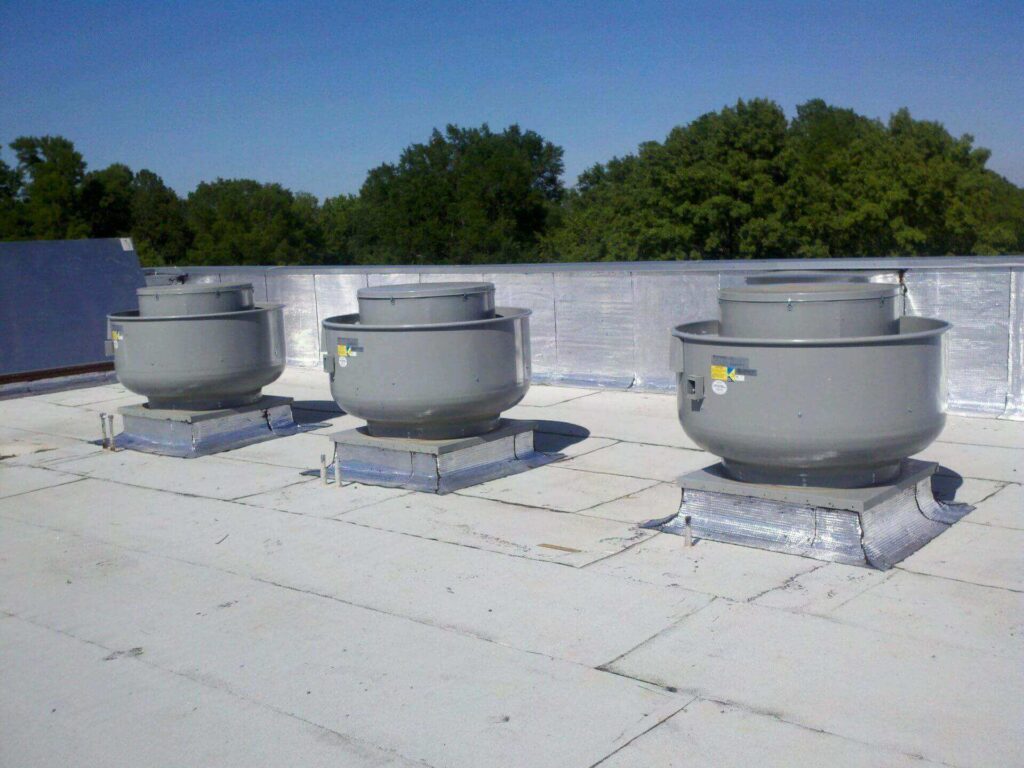
Commercial kitchen exhaust fan repair and service is one of the many services a restaurant, cafeteria or food service facility should request.
Over time, commercial kitchen exhaust hood systems can break down due to the “dirty work” of removing heat, smoke, and grease vapors on a regular basis. The bearings, fan blades, motors, and belts can start to fail from wear and tear.
Usually we start hearing a strange noise when we turn on the vent hood or a clatter or banging noise.
Typically, when a vent hood and or a commercial kitchen exhaust fan repair is needed you will hear a noise or there will be little to no suction accruing. This is typically noted when all the fumes or smoke is not leaving the protected cooking area. This is not only a nuisance for your staff and patrons, it is also a health code violation that could lead to some hefty fines if not remedied promptly.
All vent hoods have a exhaust fan unit, which is typically located outdoors or in a designated area, in which the fumes and smoke can be expelled from your cooking area and release them into the atmosphere or other acceptable areas deemed responsible.
Remember that your range hood, also known as a grease hood, along with the exhaust vent are among the most important pieces of equipment in your kitchen. Your hood’s ventilation is a key component of the overall ventilation system for your facility.
A kitchen ventilation system also works independently with the buildings HVAC system to produce a properly balanced flow of air to the building. A very slight negative air pressure is preferred in a commercial kitchen in order to keep the heat and odors of a kitchen from migrating back into the dining area or other parts of the building.
Here is a list of helpful signs that are telling you it is time to have your commercial kitchen hood maintained:
10777 Westheimer Rd. Ste. 1100 Houston, Texas, 77042
© 2022 EES INC all rights reserved.
Designed by www.danielamontenegro.com